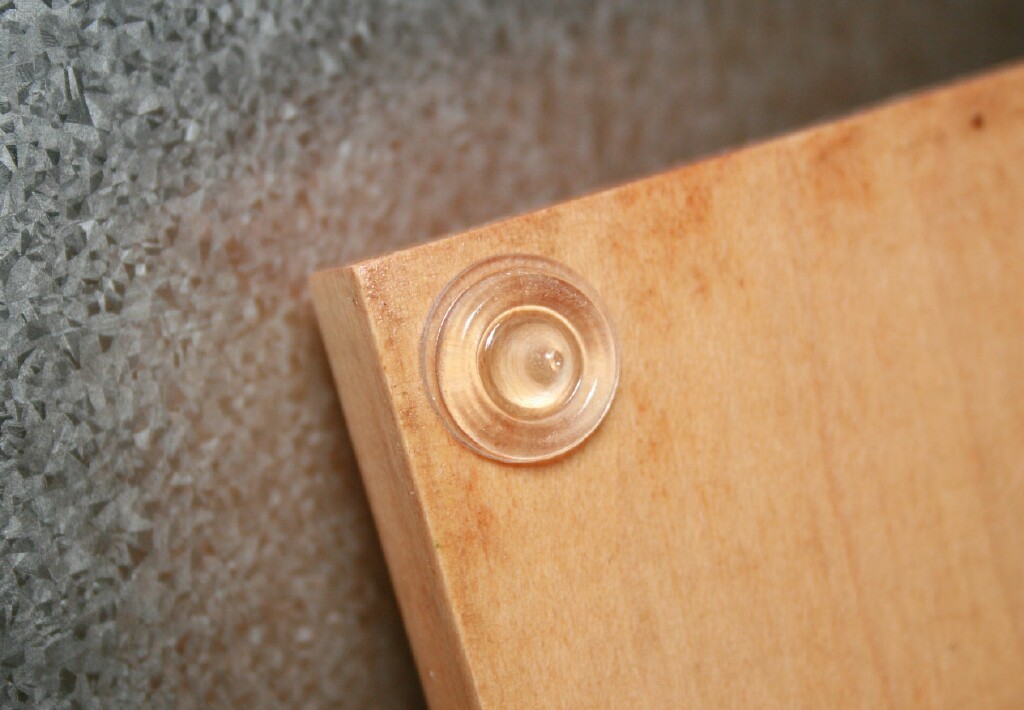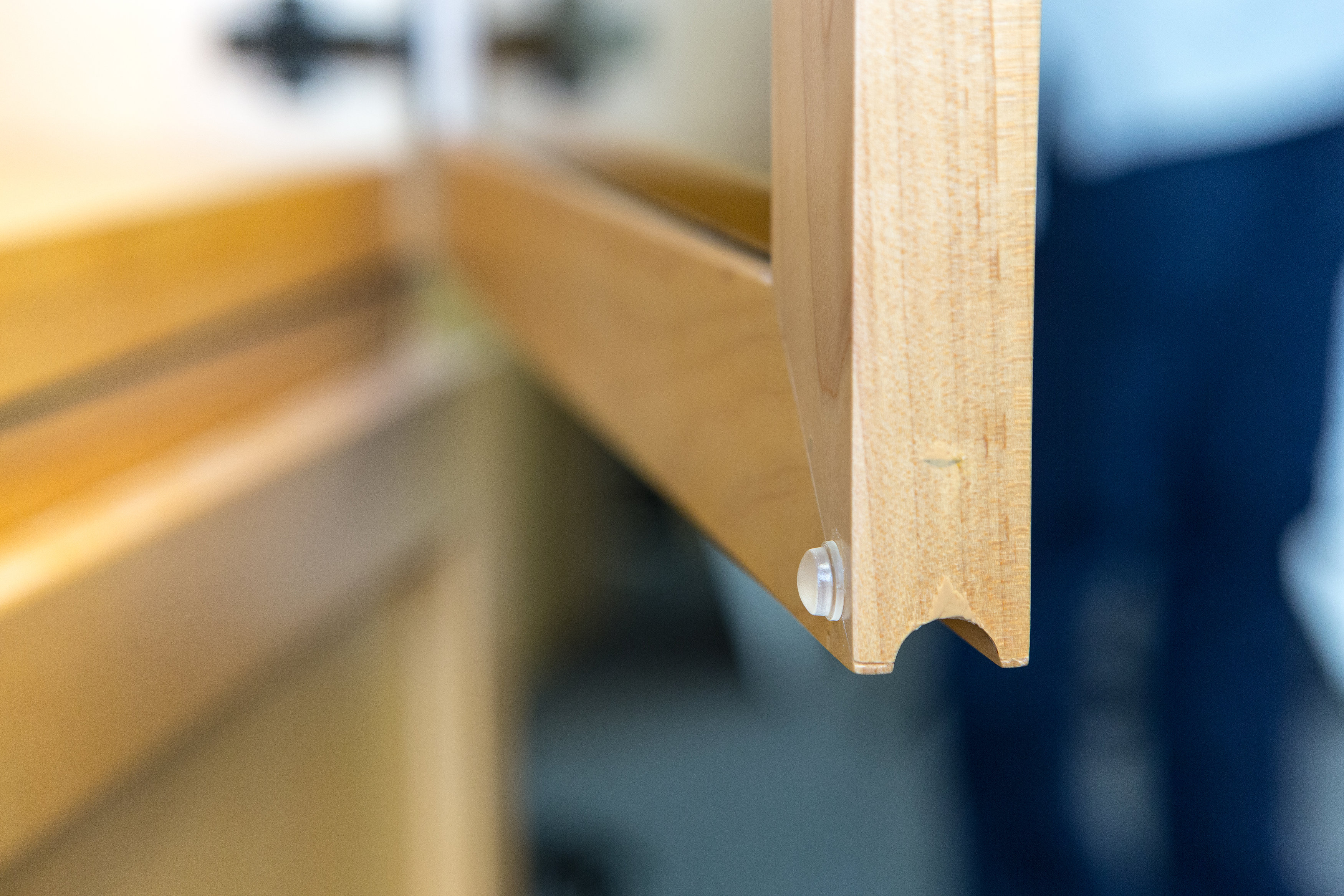Types of Cabinet Door Rubber Stops

Cabinet door rubber stops are essential components that prevent doors from slamming shut and protect both the cabinet and its contents. These stops are typically made from durable rubber or plastic materials and come in various shapes and sizes to suit different applications.
Types of Rubber Stops
Rubber stops can be categorized based on their shape, material, and mounting method. The most common types include:
- Self-adhesive rubber stops: These stops feature a self-adhesive backing that allows for easy installation. They are typically small and round or rectangular in shape. These stops are ideal for quick and convenient installation on various surfaces, such as wood, metal, or glass.
- Screw-on rubber stops: These stops are designed to be screwed onto the cabinet door or frame. They are often larger and more durable than self-adhesive stops, making them suitable for heavier doors or applications that require a more secure attachment.
- Magnetic rubber stops: These stops utilize magnets to hold the door in place. They are often used in high-traffic areas or where a silent and smooth closing action is desired. The magnetic feature provides a secure hold while allowing for easy opening and closing.
- Bumpers: These rubber stops are typically cylindrical or dome-shaped and are designed to absorb impact. They are often used on cabinet doors that frequently collide with walls or other objects, protecting the cabinet and reducing noise.
Functions of Cabinet Door Rubber Stops
Cabinet door rubber stops are small but essential components that play a crucial role in enhancing the functionality and longevity of your cabinets. They are often overlooked, but their presence makes a significant difference in the overall user experience.
Preventing Slamming and Reducing Noise
Rubber stops are designed to absorb the impact of a closing cabinet door, effectively preventing it from slamming shut. This gentle closing action is achieved through the compressibility of the rubber material, which dissipates the kinetic energy of the door. The cushioning effect of the rubber stops also significantly reduces the noise generated during door closure, creating a quieter and more peaceful environment.
Protecting Surfaces
The presence of rubber stops not only protects the cabinet door itself from damage but also safeguards the surrounding surfaces. The soft rubber material prevents scratches and dents on adjacent walls, countertops, or other furniture pieces. This is especially important in kitchens and bathrooms, where cabinets are often placed near delicate surfaces.
Enhancing Smooth and Quiet Closing Experience, Cabinet door rubber stops
Rubber stops contribute to a smooth and quiet closing experience by providing a controlled and gradual deceleration of the door. The friction generated between the rubber stop and the door surface helps to slow down the closing speed, preventing abrupt movements and minimizing the risk of slamming. This gentle closing action also reduces the stress on the hinges and door hardware, prolonging their lifespan.
Effectiveness of Different Rubber Stops
| Type of Rubber Stop | Preventing Slamming | Reducing Noise | Protecting Surfaces |
|---|---|---|---|
| Standard Rubber Bumper | Moderate | Moderate | Moderate |
| Self-Adhesive Rubber Buffer | High | High | High |
| Magnetic Cabinet Door Stop | Very High | Very High | Very High |
The effectiveness of different rubber stops in achieving these functions can vary depending on factors such as the material used, the size and shape of the stop, and the weight of the cabinet door. However, in general, self-adhesive rubber buffers and magnetic cabinet door stops are known to be highly effective in preventing slamming, reducing noise, and protecting surfaces.
Installation and Maintenance of Cabinet Door Rubber Stops

Installing and maintaining cabinet door rubber stops is crucial for ensuring smooth operation and extending their lifespan. Proper installation ensures that the stops effectively prevent doors from slamming and damaging surrounding surfaces, while regular maintenance prevents wear and tear, keeping them functioning optimally.
Installing Cabinet Door Rubber Stops
Installing cabinet door rubber stops is a straightforward process that requires minimal tools and effort. The following steps Artikel the installation procedure:
- Gather the necessary tools and materials. You will need a screwdriver, a measuring tape, a pencil, and the rubber stops themselves.
- Determine the ideal placement of the rubber stops. The position of the rubber stops is critical for optimal performance. It is recommended to place them on the cabinet door’s edge, about 1/4 inch away from the cabinet frame. This distance allows the door to close smoothly without hitting the frame.
- Mark the placement of the rubber stops. Using a pencil, mark the desired location of the rubber stops on the cabinet door.
- Attach the rubber stops. Depending on the type of rubber stop, you may need to use screws or adhesive. For screw-on stops, align the holes on the stop with the marks on the door and screw them in using the screwdriver. For adhesive stops, peel off the protective backing and press them firmly onto the marked locations.
- Adjust the position of the rubber stops. After installation, test the door to ensure it closes smoothly and the rubber stops are positioned correctly. If necessary, adjust the position of the stops by loosening the screws or repositioning the adhesive stops.
Adjusting the Position of Rubber Stops
Adjusting the position of rubber stops is crucial for ensuring optimal performance and preventing damage to cabinet doors and frames. The following guidelines provide insights into adjusting the position of rubber stops:
- Adjusting for smooth door closure: If the door slams shut or hits the frame, the rubber stops may be too close to the frame. Loosen the screws or reposition the adhesive stops slightly further away from the frame.
- Adjusting for preventing slamming: If the door closes too softly and doesn’t create a firm seal, the rubber stops may be too far away from the frame. Tighten the screws or reposition the adhesive stops closer to the frame.
- Adjusting for proper alignment: If the door doesn’t close evenly, the rubber stops may not be aligned correctly. Check the position of the stops and adjust them accordingly.
Maintaining Cabinet Door Rubber Stops
Maintaining cabinet door rubber stops involves simple practices that prolong their lifespan and ensure optimal performance. The following steps Artikel common maintenance practices:
- Cleaning rubber stops: Regularly clean the rubber stops with a damp cloth and mild soap. Avoid using harsh chemicals or abrasive cleaners that could damage the rubber.
- Inspecting for wear and tear: Periodically inspect the rubber stops for signs of wear and tear, such as cracks, tears, or loose attachments. Replace damaged stops promptly to prevent further damage to the cabinet door and frame.
- Replacing rubber stops: Replace rubber stops as needed. The frequency of replacement depends on the usage and quality of the stops. It is generally recommended to replace them every few years or when they show signs of wear and tear.
Cabinet door rubber stops are often overlooked, but they play a crucial role in preserving the longevity of your storage solutions. Whether you opt for a wood and metal storage cabinet or a more contemporary design, these seemingly simple components absorb impact and prevent wear and tear on the cabinet’s structure, ultimately ensuring a smoother and quieter operation for years to come.
Cabinet door rubber stops are often overlooked, but they play a crucial role in preserving the beauty and functionality of your cabinets. While they may seem like a minor detail, these humble rubber bumpers prevent unsightly dents and scratches on your wood furniture wall cabinets , ensuring that their timeless elegance remains intact for years to come.
Investing in high-quality rubber stops is a smart move for any homeowner who appreciates the value of well-maintained cabinetry.
